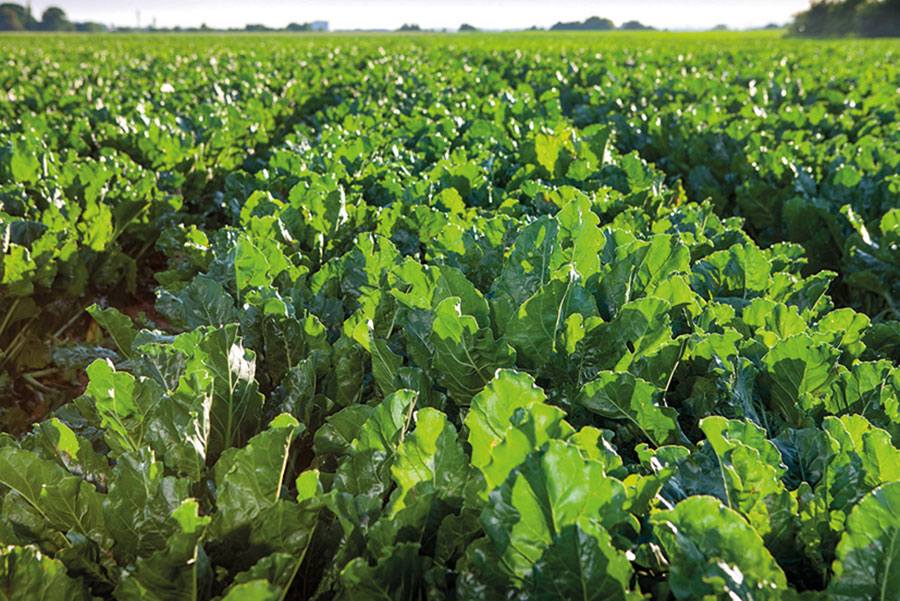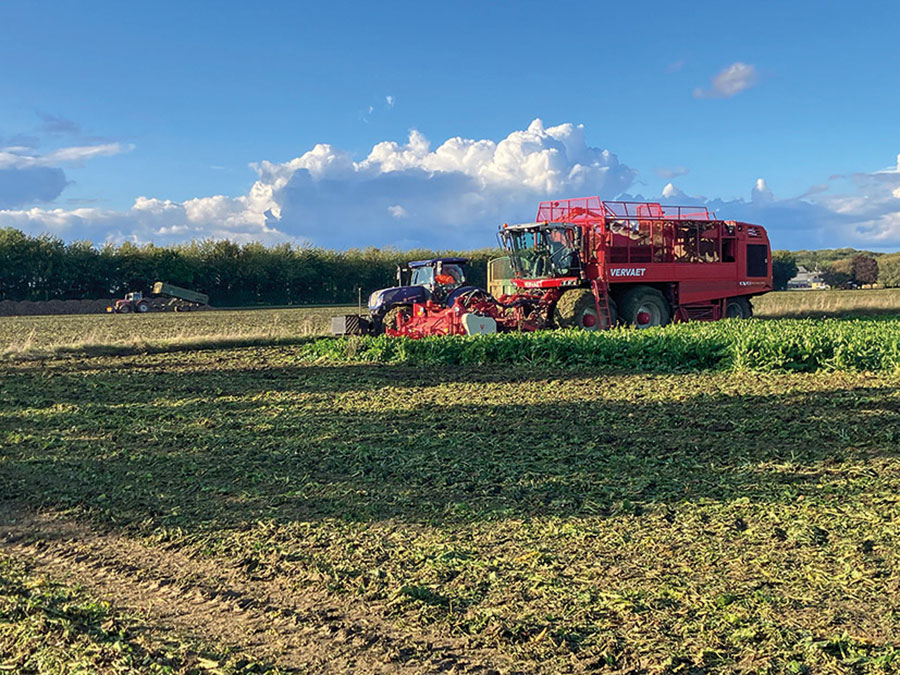Virus yellows threat: Grower confident in variety choice
26th April 2024
With a lot of uncertainty this spring, a Suffolk sugar beet grower who hasn’t opted for Cruiser-treated seed is nervous about aphids but has confidence in his variety choice.

Nestled in central Suffolk, Red House Farm at Bacton hasn’t long finished harvesting last season’s sugar beet. Lifting of the 250ha crop began in October, and the last beet came out of the ground in February.
Although late lifting isn’t unusual for the farm, some has been much later than intended due to the extremely wet winter conditions, says Roger Steed, farm manager for David Black & Son Ltd.
The farm business has 1,300ha in hand, of which 900ha is owned and the remaining 400ha is contract farmed.
For the past few years, BTS 1915 has taken up around a third of the sugar beet acreage. “We’ve had record yields with BTS 1915, yielding 118t/ha on one of the farms in the past,” says Mr Steed.
Although the 2023 campaign was moderate by comparison, the Betaseed variety marketed by Limagrain held its own, with farm averages of 75t/ha in the early lifting slot beginning in mid-September, 107t/ha in the middle slot from mid-October to December, and 94t/ha where an unplanned late lift on heavier land took place in February.
Overall, the farm averaged 89t/ha over its 23,000t contracted tonnage – a whisker below the five-year farm average.
The performance of BTS 1915 on-farm is one of its outstanding characteristics, adds Limagrain’s arable technical manager, Ron Granger (pictured left). “Not only is it the highest yielding variety on the BBRO Recommended List, BTS 1915 brings this performance to farmers’ fields where it has performed consistently in different seasons – very dry, very wet, when virus yellows has been an issue, and across different harvest timings.
“The variety has good rust resistance and has shown very high yield potential in official untreated trials – an insurance for yields when lifted late in testing autumns, such as the one we’ve just experienced,” says Mr Granger.
Beet drilling
With sugar beet planting for the new campaign just around the corner, Mr Steed is waiting for the ground to dry out properly before thoughts turn to drilling.

The farm has a rotation of oilseed rape, winter wheat, sugar beet, winter wheat, winter barley, going back into oilseed rape.
“We find sugar beet does a good job of pulling moisture out of the ground, which allows us to generally get a crop of winter wheat in behind it if we follow the beet harvester quickly with the plough and combination drill,” adds Mr Steed.
BTS 1915 isn’t a variety that Mr Steed would plant early, because it produces bolters in the pre-mid-March drilling slot; instead, it’s one of the last varieties to go in on the farm.
Virus yellows forecast
But he isn’t feeling quite so relaxed about the virus yellows forecast for 2024. The early flight of aphids into crops could be problematic, predicted to be around 10th April when many crops will likely either be emerging or at early seedling growth stages.
The farm has never made use of the Cruiser SB (thiamethoxam) emergency authorisation because of the following crop restrictions, which would be an issue with oilseed rape in the rotation. That means getting the crop in right, so that seedlings have every opportunity to grow away quickly, is doubly important this spring.
But there is also a positive for the farm in not taking the Cruiser treated option, explains Mr Steed. “Our non-Cruiser seed gets a higher dose of Force (tefluthrin) seed treatment which is added protection against the soil pest complex.”
For aphid control, a two-spray insecticide programme has been the norm for the past few years, which worked well in 2023. However, virus yellows incidence was 55% across the crop in the previous season, when the farm had to make use of British Sugar’s crop insurance scheme.
With similarities to the virus position in 2020 when aphids proliferated in young crops very early in the spring, there’s reason enough to be nervous of the threat from the disease.
“We’ll be monitoring the crop very closely for aphids when warnings go out. They’re very difficult to keep out of the crop if plants are very small as an insecticide application only works for a few days when plants don’t have many leaves,” he explains.
Tricky timing
Timing insecticides around herbicides is also tricky. “Usually, we’ve got weeds under control using a low dose FAR approach before we have to think about aphids, but we may not be in that position this year.”
Growers that haven’t planted Cruiser treated seed this season are able to use the two approved insecticide actives, flonicamid available in products Teppeki or Afinto, and acetamiprid (InSyst) in any order, whereas Cruiser users are obligated to use flonicamid as a first foliar spray.
BBRO is actively seeking an emergency product authorisation to give non-Cruiser users the possibility of a third insecticide application, should it be needed.
To further complicate matters, sugar beet can be notoriously sensitive to herbicides, however careful the approach, as much depends on weather conditions at the time of application. Holding back crop growth is never desirable but it’s something Mr Steed will be trying to avoid more than ever this spring.
“We usually apply a pre-emergence application of metamitron (Goltix), adding ethofumesate where black-grass is also a problem. Normally, we’ll follow with a programme of 3–4 low dose post-emergence sprays, and as fat hen is often a problem, we may go late with one of these.
“We have tank-mixed insecticide with clethodim (Centurion Max) in the past without any ill-effects, so we may have to look into applying with a FAR treatment if aphids are really early this spring.”
Despite the worries this season will inevitably bring, Mr Steed feels positive about the sugar beet crop. “We have good soils here and it’s a crop that has historically performed well for us, averaging 90t/ha over the past five years – which includes seasons where virus yellows has affected yield.”
Read more arable news
